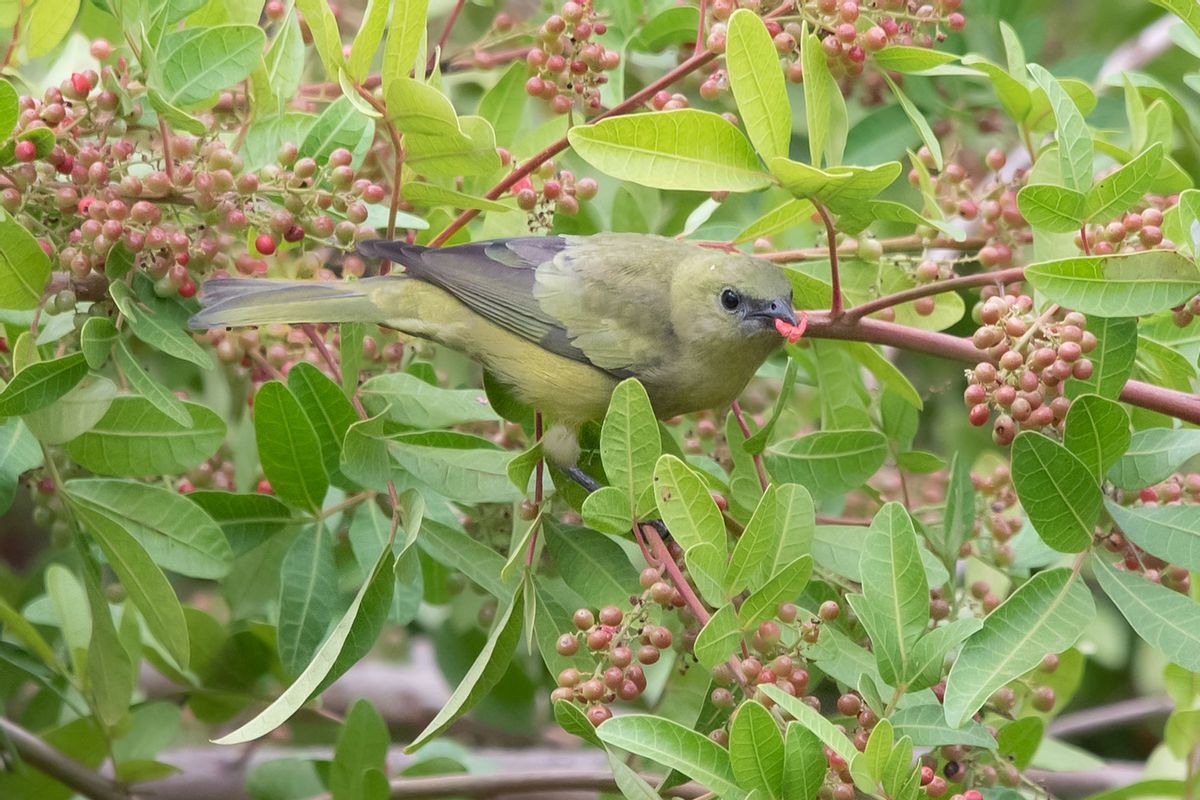Fruit-eating birds — also known as frugivores — come in many colors and sizes, from the tiny yellow Palm tanager and the bright Blue red-legged honeycreeper (Thraupis palmarum) to the Toucan-like black, gray, white and orange Great hornbill (Buceros bicornis). They are also essential to the preservation of tropical forests, with 70 to 90 percent of their tree species depending on frugivores to eat, spread and excrete their seeds. This, in turn, allows forests to serve an important role storing carbon and reducing the impact of human-caused climate change.
Yet according to a recent study in the journal Nature Climate Change, frugivores are struggling to perform this essential ecological service because of human activity. As humans fragment the forests — that is, break large forests into smaller patches through construction and other environmentally destructive practices — the scientists learned that they restrict the movement of important frugivorous birds. This has a climate change consequence, as it reduces their ability to store carbon by up to 38 percent. In Brazil, the scientists learned that the birds can handle at most 435 feet (133 meters) of distance between forest patches to be able to easily move through the landscape.
The researchers also broke down how different species of birds are able to spread the types of trees that protect against climate change. Ultimately larger frugivores like the Curl-crested jay (Cyanocorax cristatellus) and the Toco toucan (Ramphastos toco) are more important in performing this function.
"Given that the movement of larger frugivores is disproportionately affected by fragmentation, the limitation of their movements may strongly limit the recovery of large, late-succession trees, ultimately reducing the carbon storage potential of recovering ecosystems," the authors write.



Shares